Lumion BLOG
Feel the space with Lumion
From a Spinal Injury to an Independent Design Professional with Lumion
TweetShareShareShareDespite tetraplegia, and use of only one arm, Lumion user Manakit Thawlom is making strides in the professional design world with his renders of modern Thai structures.
While the architecture profession has progressed to be more inclusive and diverse, there are still many barriers to standard CAD software that limit professional opportunities for some people with disabilities.
With the rise of new computer technologies and intuitive 3D architecture software like Lumion, designer Manakit Thawlom is breaking through and helping change that narrative.
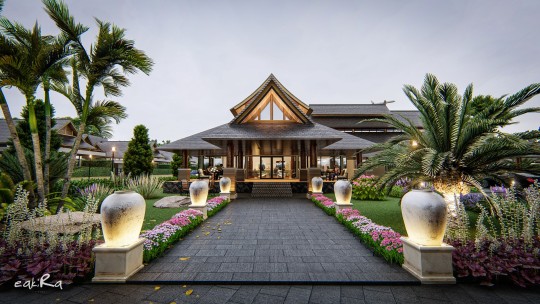
One of Manakit’s favorite projects was the stylish DeChiang in Chiang Mai. Rendered in Lumion 8.
Born in Thailand to a family of four, Manakit (also known online as Eakira) was in a car accident in 1996 and suffered a C4 spinal cord injury where he lost the ability to move three of his four limbs. With the love and support of his family and friends, as well as years of physical therapy, Manakit is now producing rendered images and videos with SketchUp and Lumion, showcasing the beauty of modern Thai design while getting a little creative with his personal projects.
“Lumion is really great for disabled users,” said Manakit. “For instance, people with tetraplegia cannot use the mouse like a normal user, and we can’t press multiple buttons simultaneously. [Lumion’s] user interface is easy to use, especially when using a pen mouse and head mouse (I often use the head mouse).”
In this blog post, we sit down with Manakit to discuss his story and how he’s overcoming the obstacles presented by his injury while creating spectacular renders in Lumion.
Overcoming injury through architecture and design
When a car accident in 1996 severely injured his C4 spine and spinal cord, Manakit found himself paralyzed and unable to use both his legs and an arm. Bedridden and faced with a new, very different life, his family gave him the love and support he needed and he was motivated to learn new skills and adapt to the challenges he faced.

Manakit, middle, with his mother and little sister.
Over this period, his passion for learning new things never waned. With a donated computer and a Windows 3.1 operating system, he dived into various software such as MS Word, Adobe Photoshop 5.0, Vegas Pro 9 and Joomla. As he continued building up his skills, Manakit started to work by editing pre-wedding photos.
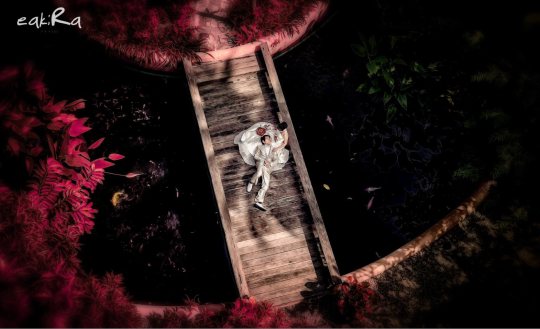
Later, he would get involved in magazine work as well as architectural 3D compositing and rendering.
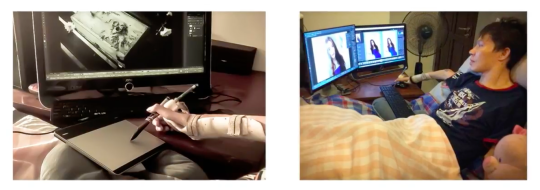
“My world was opened again,” he said. “With the income, my little sister and I have built a home for our parents. The house is specially designed for the physically disabled, and I designed it myself.”
You can watch his full story here:
“I’m proud and happy to be able to support my family and help people around me. ‘We can be disabled but there’s always great things in return.’”
Navigating the 3D architectural design profession
For some of his early 3D architecture projects, Manakit mentioned using “The Sims” to help him flush out design ideas. This program, he said, was refreshingly user-friendly for a person with his injury.
It was around three years ago, however, that Manakit was asked to create a 3D landscape with pictures and video. At this time, he was using SketchUp to realize the project. A year later, Manakit was rendering images using Lumion 5.
“My first impression was ‘Wow!’ It was so easy to use, easy to insert a model and easy to edit. Nevertheless, the lighting and color in Lumion 5 weren’t impressing clients. Fast forward to Lumion 8, I was hired by Lanna Asset and they were impressed by Lumion 8’s performance so they bought a license and a PC for me to work on. That was how I really got to start using Lumion. It’s way more convenient and faster than any other program for both image and video rendering. I can render an image and then a video without reconfiguring many parameters.”
One of Manakit’s favorite projects was the ‘DeChiang’ project, a housing project in Chiang Mai that serves as a prime example of modern Thai design.
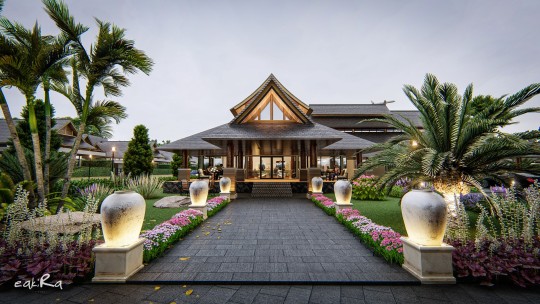
Front view of the DeChiang Housing Project
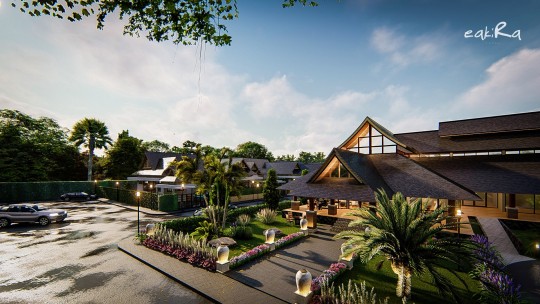
The parking lot and landscaping
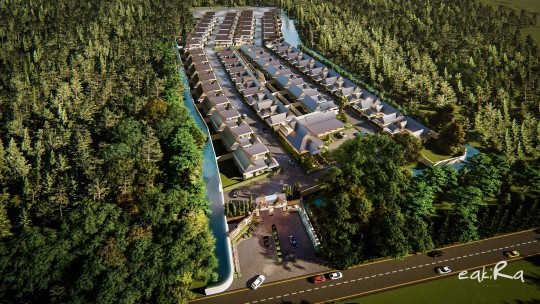
Birds-eye-view of the housing project
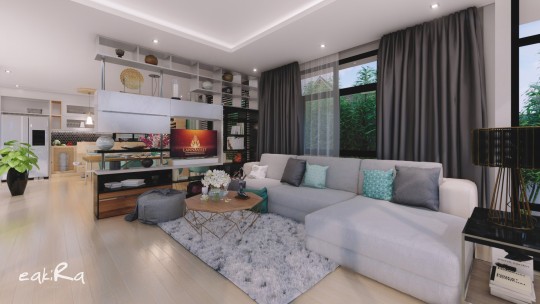
Home interior design
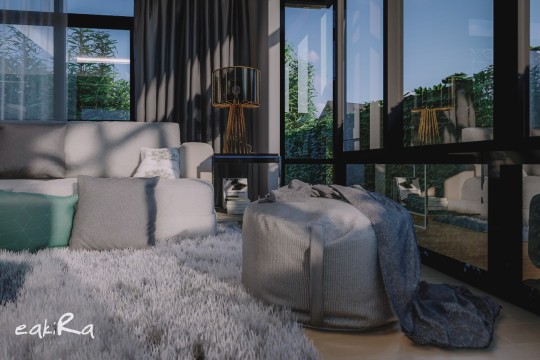
Detail of interior
“My workflow usually goes like this. The team I work with will design the building and create a SketchUp model. Next, I edit the materials and group the colors, and use LiveSync for SketchUp to import the model into Lumion. I position the model, composite the trees and landscape, configure the materials and set up the scene and lighting. The last step is to render images and videos (if requested).”
His most challenging project was Paradise Hills, which was a resort located on a hilly slope and surrounded by forests. “The difficulty here was recreating the forest and the landscape to resemble the actual location.”
Paradise Hills
Manakit’s favorite features in Lumion are ‘LiveSync for SketchUp’ and the ‘Soften Hard Edges,’ while his favorite effects are ‘Sky Light’, ‘Reflections’ and ‘Styles’.
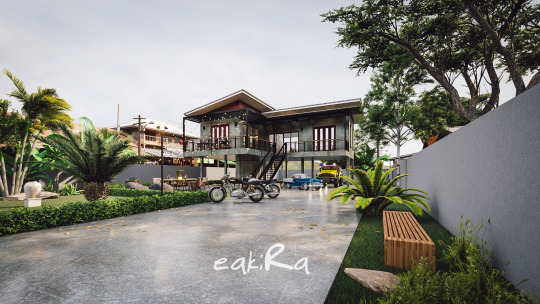
Thai Loft. Project by Tm_Design.
How Lumion Can Empower Designers With Disabilities
Most rendering software is notorious for being out of reach for architects, leaving them with little choice but to outsource or hire a visualization specialist. Lumion, on the other hand, underscores fast rendering with intelligent controls so that every architect can pick it up and start creating beautiful results immediately.
According to Manakit, “I usually talk about Lumion with my disabled friends and my friends that work in the field, and I mention that Lumion is user-friendly, easy to configure and straightforward when arranging models and materials — just like playing The Sims. It’s even more fun when playing around with the lighting and the lighting effects by simply dragging the mouse. It takes only a couple of minutes to edit the lights.”
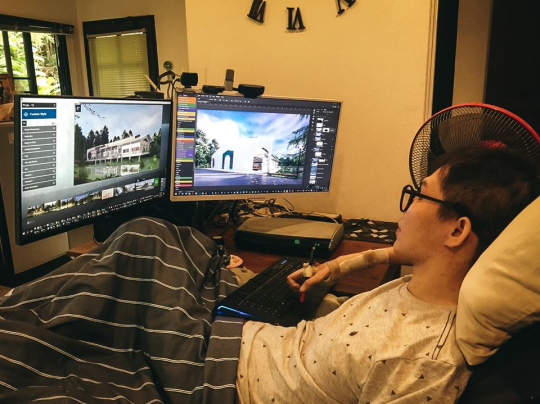
Manakit with his dual-monitor setup
When it comes to being a designer with tetraplegia, Manakit enjoys how Lumion has shortcuts for many commands. “People with tetraplegia cannot use a mouse like a normal user and cannot press multiple buttons simultaneously,” Manakit said. “The interface is really easy if you are using a pen mouse or a head mouse (I’m using the head mouse). It’s great for disabled users.”
Fast Workflows, Beautiful Results
The idea behind Lumion is this — architects and designers of any background can throw in their 3D model, quickly add materials and context, and tweak a few effects before rendering engaging, beautiful images and videos with jaw-dropping speeds.
While these qualities can help architects and designers to render incredible results themselves, Lumion’s design and intuitive controls also make it the ideal 3D rendering tool for people with disabilities. To learn more about Lumion, visit our What’s New page.
#Lumion